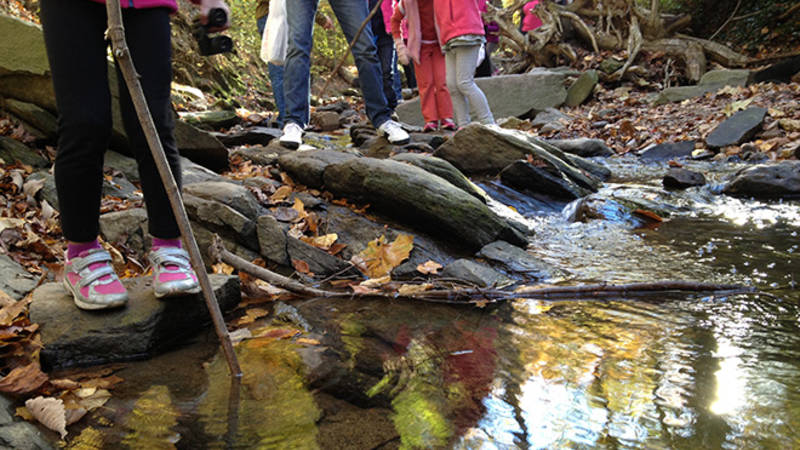NPCA recently studied the waste at three national parks as a first step toward implementing zero-landfill initiatives under the leadership of corporate partner Subaru. Here’s what we found, how visitors feel about park trash and what you can do to help.
As the head of NPCA’s zero landfill program, I spend a lot of time thinking about trash. I recently helped to put together a report on what is in the trash cans in three national parks. This report is helping us to study how we can set up programs to keep all of the waste at these parks — every last bottle and can — out of our landfills.
Under the leadership of NPCA’s corporate partner, Subaru of America, Inc., we are working with the National Park Service to reduce waste at Denali, Grand Teton and Yosemite, and to divert the waste that still exists to composting operations and recycling facilities. Our long-term goal is to use what we learn from these three pilot parks to significantly reduce landfill waste throughout the entire National Park System.
What the Problem Looks Like

Park staff install new recycling bins at Yosemite National Park.
National Park Service photo.If you’re like me, you might be curious about the 100 million pounds of trash that visitors at these parks threw away in 2015. A few of the items surprised me — like the tents, sleeping bags and mattresses people simply left behind at campgrounds. That’s an expensive way to camp! But most of what we found probably resembles what’s in your own household trash and recycling bins: Plastic bottles, paper cups, plastic bags, food and food wrappers were among the most common items.
Here is the breakdown of what we found:
40.7% organic waste (primarily food)
21.6% paper and cardboard
17% plastics
6.6% glass
14% other reusable or recyclable items such as food packaging, propane cylinders and camping gear
How Park Visitors Feel About Their Trash
One important component in our strategy to eliminate landfill waste is to educate park visitors — if visitors bring less waste, there is less to divert. Our partners at Subaru commissioned a survey by phone and email this past March to help understand visitors’ habits and attitudes around park trash. Here are a few of the highlights.
Two-thirds of national park visitors (67%) use park recycling facilities.
A majority of visitors (82%) consume food or drinks while in the parks, and more than half (53%) purchase these items within the park.
Infographic on Zero-Landfill Initiative
A survey by NPCA’s corporate partner Subaru reveals that most Americans are unaware of the waste problem in our national parks. This infographic highlights some of the findings.
See more ›More than one-third of park visitors (35%) drink from disposable water bottles, but most visitors (79%) say they would support the removal of single-use water bottles in national parks if it would significantly help reduce waste.
Two in five visitors (40%) take their trash with them when they leave.
Once made aware of the waste management issues at parks, a majority of visitors (54%) say they are willing to do everything they can to help reduce park waste.
What to Do Beyond Packing Your Reusable Bottle
For those of us who are willing to do just a few things to reduce park waste, what will actually make a significant difference? National park visitors already tend to be some of the most environmentally conscious people around. We care deeply about these places and want to keep them beautiful. We already know how important it is to bring our reusable bottles and bags with us. We tell our children to “leave no trace.” What more can we do?
Here are a few less obvious tips, based on our study findings.
1. Don’t just skip the disposable bottle. Skip the cup, too. We’ve all been trained to bring our reusable bottles with us to avoid buying single-use plastic water bottles. We found paper products to be just as pervasive in the waste stream as plastics were. One easy solution to reduce this waste is to bring an insulated mug or thermos for your coffee and tea. But even if you forget to pack one, you can still put hot beverages in the same reusable metal bottle you already carry on all of your park trips — as long as you remember to protect your hands!
2. Choose aluminum over glass. Glass is highly recyclable, but infrastructure for this type of recycling is more limited throughout the U.S. than for other types of waste. For rural national parks, recycling plants may be miles and miles away, and glass is heavy and expensive to transport. Aluminum, on the other hand, is easier and more cost-effective to recycle. If you have the choice, choose aluminum. If you bring glass containers into the park, take them back out when you leave. There’s a greater chance they’ll be easier to recycle near your home than near the park.

Help Kids “Leave No Trace”
As we start a new year, it’s a perfect opportunity to make a resolution to spend more time in nature with the young people in our lives.
See more ›3. Opt for online trip-planning resources. Maps and park tips for smart phones are more sophisticated than ever. Many apps do not require cell service to use, such as those created by NPCA corporate partner Chimani. If you do choose paper maps and newsletters you won’t need after you leave, give them to friends you’ve inspired to take their own park trip.
4. Skip the straw. Americans use 500 million plastic drinking straws per day. Like plastic bottles, people use straws just once and put them in the trash mere minutes after unwrapping them. So often, using a straw is a reflexive act, something we are simply accustomed to doing without thinking much about it. Dare to sip your drink without one, even if a server or check-out attendant offers it.
Next Steps for the Three Pilot Parks
Ultimately, staff at each park will bear the responsibility for managing their zero-landfill programs. Here are some of the steps NPCA, Subaru, national park employees and concessionaire partners are taking to make waste reduction a long-term reality at Denali, Grand Teton and Yosemite.
We’ve added more than 400 new visitor and employee area recycling containers.
We’ve increased composting infrastructure and are installing special machines known as digesters to help break down restaurant waste.
We’ve built relationships with local farmers, who are using food waste generated from park operations.
We’ve hired numerous staff members to coordinate zero-landfill and implement programs.
Stay On Top of News
Our email newsletter shares the latest on parks.
We’ve trained thousands of employees across the three parks and their gateway communities on how to reduce waste and keep it out of landfills.
We’ve improved signage and information for visitors to help them reduce and sort their trash more effectively.
We are raising awareness within the parks and in other outdoor recreation forums such as the Outdoor Retailer Show to reduce waste to the landfills through our #Don’tFeedtheLandfills campaign.
For more on our zero-landfill initiative and Subaru’s partnership with the national parks, see Subaru’s release.
About the author
-
 Jamie Varner Former Senior Director
Jamie Varner Former Senior DirectorJamie worked in NPCA's Center for Park Management from 2008 to 2017. His programmatic areas of focus were urban parks and NPCA's Find Your Voice initiative.
-
General